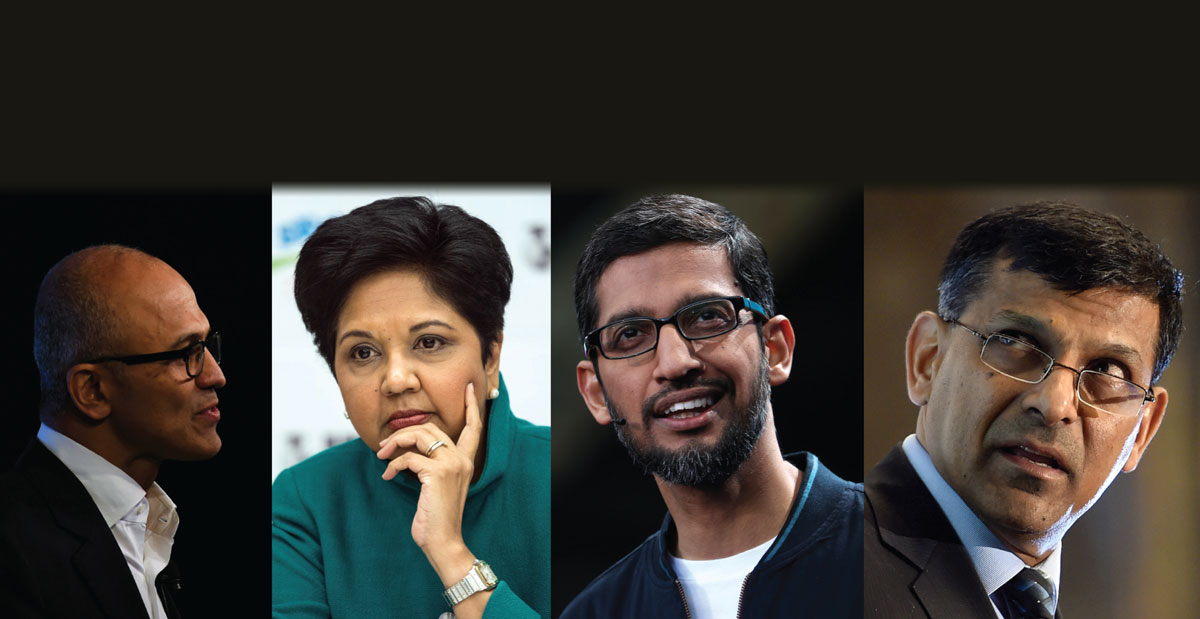STRONGER TIES
(L-r): Microsoft CEO Satya Nadella. (Money Sharma | AFP | Getty Images); Pepsico CEO Indra Nooyi. (Nicholas Kamm | AFP | Getty Images); Google CEO Sundar Pichai. (Justin Sullivan | Getty Images); and Reserve Bank of India Governor Raghuram Rajan. (Manjunath Kiran | AFP | Getty Images)
Today, Indo-U.S. relations encompasses several facets. It is about the bonhomie between President Barack Obama and Prime Minister Narendra Modi. It is about talented Indian software engineers handling the backend IT framework of U.S. majors. It is about the economic and political clout of the very successful and affluent Indian American community. It is about vaunted success stories about Indians, such as Satya Nadella, Sundar Pichai or Indra Nooyi, making it so big in America, writes Siddharth Srivastava. – @siliconeer #siliconeer #narendramodi #namo #barackobama #raghuramrajan #SatyaNadella #SundarPichai #IndiaNooyi #GuarGumFarming #WestinghouseElectric #Toshiba #IndianEmbassy #AmbassadorArunSingh #NSG #NuclearSuppliersGroup #SiliconValley #IndianIT #IndianSoftwareEngineers #Google #Microsoft #Pepsico
RBI governor Raghuram Rajan, not only succeeded America, he returned to efficiently manage India’s monetary policy for three years. Now that his tenure is getting over, he will probably be best remembered for exhorting public sector banks to set their books right and get after willful defaulters and crony capitalists who have played around with taxpayers money far too long. It is not very clear yet, why Rajan has been shown the door, but he has definitely made his mark.
Beyond Rajan and Modi, there are more and more signs that the Indian and U.S. economies are getting deeply interlinked in even more dynamic ways than hordes of tourists visiting Disneyland, Las Vegas or students heading to American colleges for further degrees. Two recent episodes, one for the positive and the other negative, demonstrate the same.

U.S.-major Westinghouse Electric, in which Toshiba has a majority stake, is in “advanced discussions” with Indian government to build six nuclear power plants (NPPs) in India that is looking to ramp up its atomic power capacity. This was stated by India’s Ambassador to U.S., ahead of Modi’s visit to Washington this month, during which he made a memorable speech at the U.S. Congress.
“There is a very detailed and advanced negotiation between Westinghouse and India. The issues that remain to be worked out are related to cost and financing,” Ambassador Arun Singh said. USA and India signed the civil nuclear agreement in 2008, but there are no agreements till now to build any NPP’s due to multiple concerns about liability, safety and availability of land. A deal with Westinghouse will be the first contract with the final paperwork expected to be completed soon.
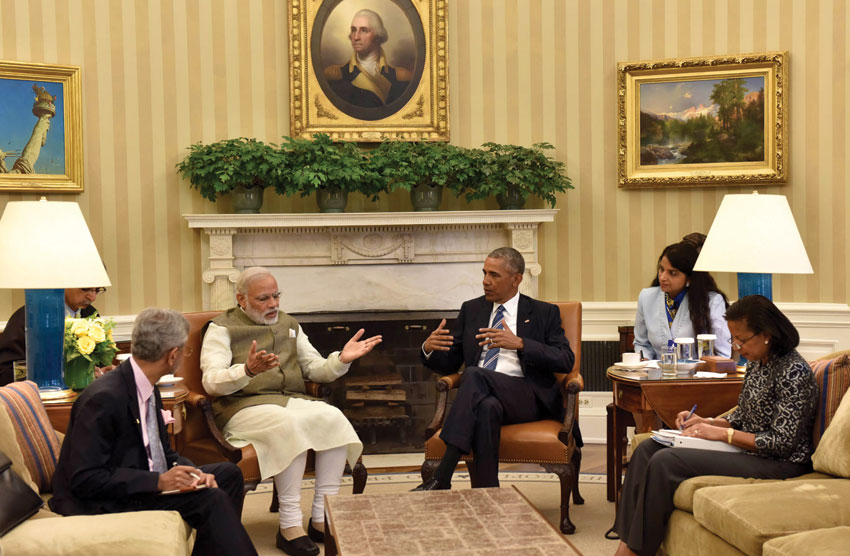
Progress to build the six AP-1000 NPP’s originally planned in Gujarat, has been stuck due to local opposition to acquisition of land for the project. However, a solution has now been found by shifting the project to Andhra Pradesh where the land is being formally purchased by the state-owned Nuclear Power Corporation of India (NPCIL) that will operate the project. “The land acquisition was stuck for over a decade, but now it’s coming to a conclusion. Purchase will close this year. Construction can begin in 2017,” Ajay Jain, energy secretary of Andhra Pradesh, told Reuters
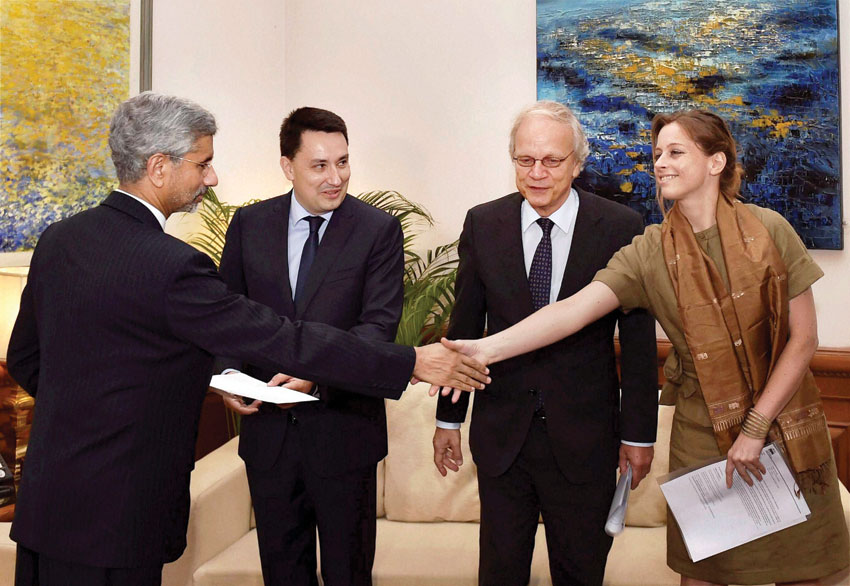
The fortunes of Indian farmers, meanwhile, is also linked to developments in America. The fall in U.S. shale output due to slump in oil and gas prices is impacting India’s agriculture sector. The area under guar seed production, mostly in north India, used to extract shale oil and gas during fracturing, in the coming monsoon sowing season is expected to drop steeply. This is due to falling export demand and much lower remuneration from struggling shale producers in America.
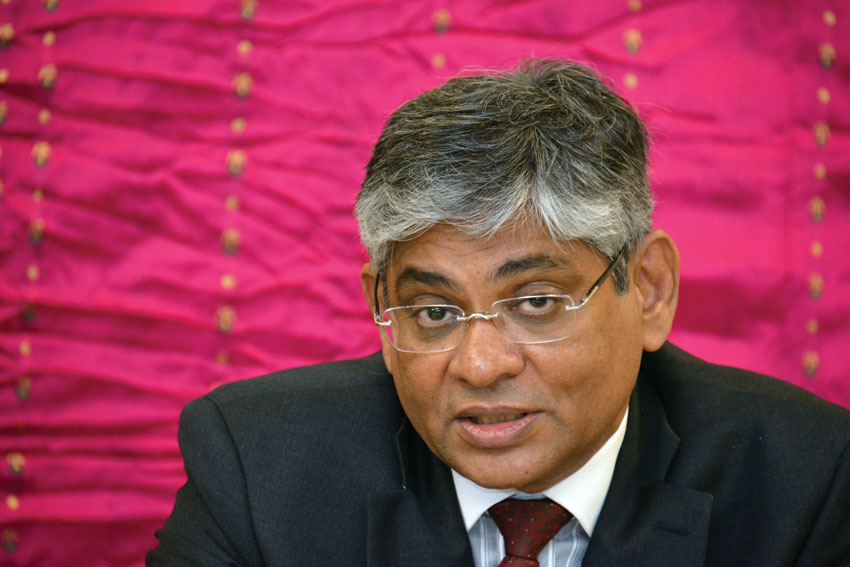
Indian farmers are opting to plant pulses instead as the government has announced higher support prices due to acute domestic shortages. India produces 80% of the world’s guar gum which is extracted from the seeds and used to thicken the slurry of water, sand and chemicals pumped into wells during hydraulic fracturing to tap shale oil and gas. “Guar seed farmers are unhappy. They are likely to shift to pulses. We could see as high as 15-20% reduction in guar seed area,” Reuters quoted K.N. Rahiman, chief research officer at Ruchi Soya, a leading guar gum exporter. “At the current price guar is not profitable. Pulses, paddy are giving better returns,” said Balbir Arniawali, a farmer from Haryana. “More than half of India’s guar gum processing plants are now closed and nearly half of the guar gum from last year’s crop remains unsold,” said a gum exporter in Rajasthan, the state that produces the most guar.
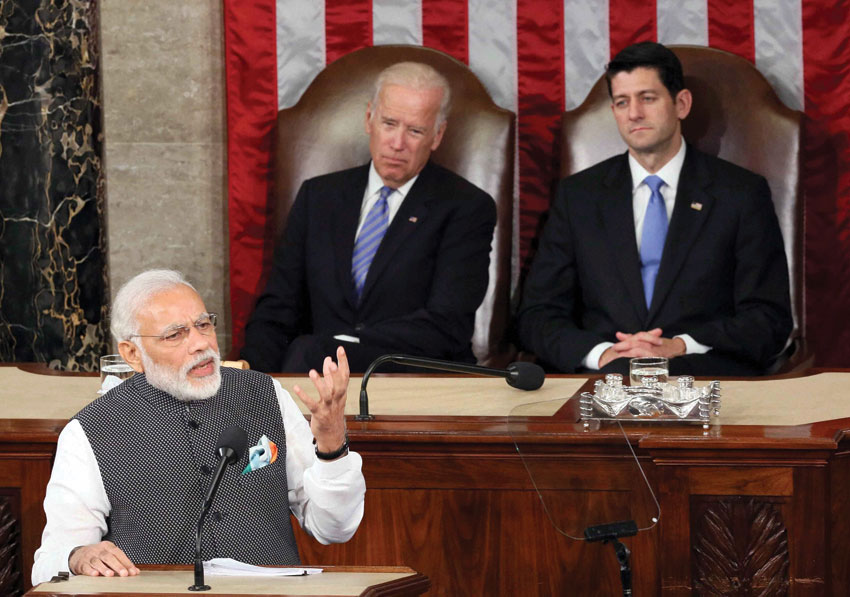
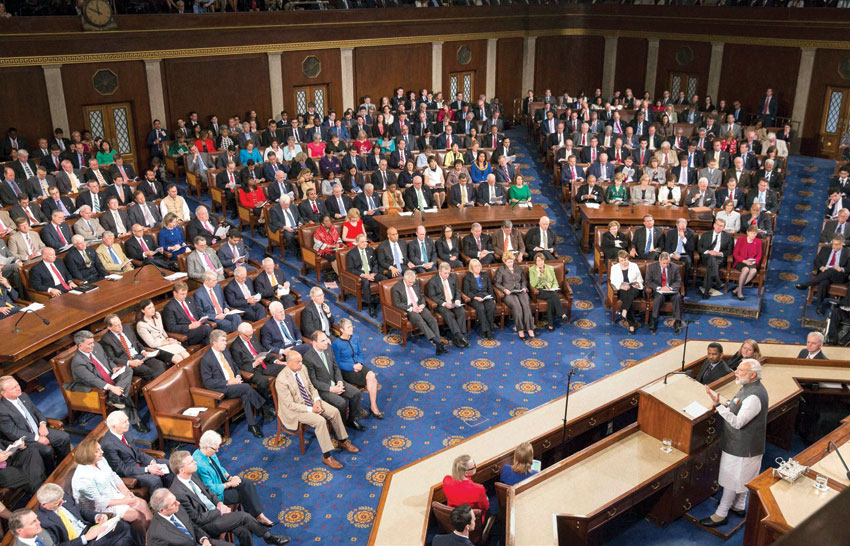
Deeper economic linkages are translating into the strategic sphere. USA is firmly backing India’s entry into the exclusive Nuclear Suppliers Group that is presently stuck due to opposition by China that is always wary of U.S. designs in the Asian region. However, due to sustained U.S. support, India, this month, became the 35th member of the Missile Technology Control Regime (MTCR).
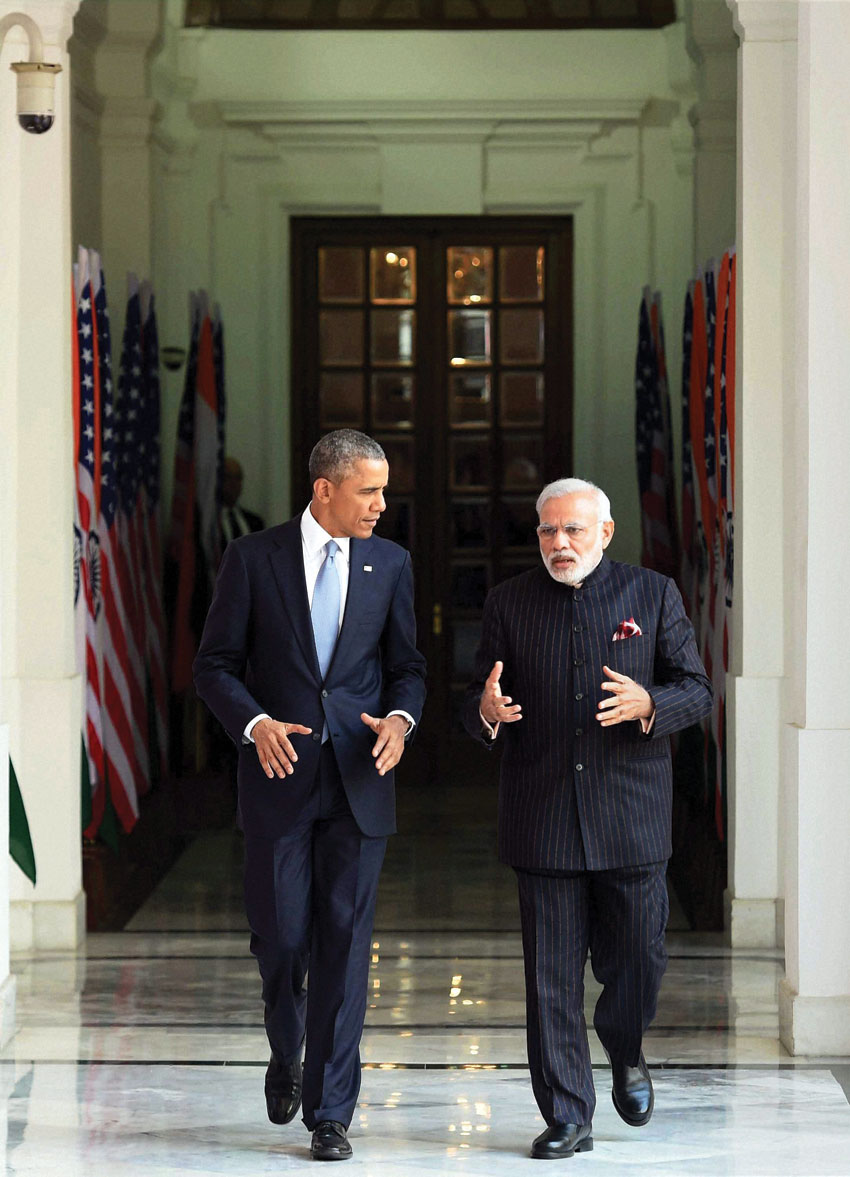
This will allow transfer of high-end missile technology and also give India a license to export arms, which is a boost to Modi’s “Make in India” plans. The MTCR is an elite club, of which China is not a member, that controls exports in missile technology and unmanned delivery systems of atomic or other weapons of mass destruction. Welcoming India’s entry, Washington said, MTCR members, including the U.S., agreed that India’s membership “would strengthen international nonproliferation.”
As some say, it is always good to have the rich and powerful on your side, even if there are a few blips along the way, such as the loss of income for Indian farmers dependent on growing guar.
